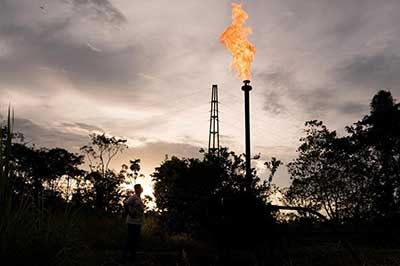Date: 18/02/2023
Relevance: GS-3: Climate Change, Energy and Environment.
Key Phrases: Long-term Energy Transition, Cleaner Fuel Alternative, Perform, Achieve and Trade Scheme, Decarbonizing the Transport Sector, One Nation One Gas Grid, National Hydrogen Mission, Natural Gas STAR Program, Methane Challenge Partnership
Why in News?
- Energy Conservation (Amendment) Bill, 2022 was a key milestone as it has the potential to integrate several discreet initiatives like the renewable energy certificates, and the Perform, Achieve, and Trade scheme by creating a carbon trading market.
- It will accelerate the clean energy transition by galvanizing cleaner alternatives such as natural gas, pumped storage, and hydrogen.
Key Highlights:
- Given India’s large geography, heterogeneity of energy demands, and logistical constraints, the transition will require multiple technologies and energy sources to provide coordinated complementary support.
- Among other options, natural gas is well placed to play a key role in the energy transition, consistent with the government’s ambition of developing a gas-based economy.
Natural Gas Star Program:
- The U.S. Environmental Protection Agency launched its Natural Gas STAR program in 1993 to provide a framework for companies with U.S. oil and gas operations to implement methane-reducing technologies and practices and document their voluntary emission reduction activities.
Methane Challenge Partnership:
- In 2016, the EPA established an additional voluntary program, called the Methane Challenge, to encourage oil and natural gas companies to adopt cost-effective technologies and practices that improve operational efficiency and reduce methane emissions.
Advantages of Natural Gas As Medium Term Viable Alternative:
- Cleaner Fuel Alternative:
- Natural gas is a relatively cleaner fuel with an established supply chain and matures the global market.
- India can aim for the stated medium-term goal of 15 percent share through a combination of strategic supply agreements and by expanding domestic exploration and production.
- International gas prices are expected to soften, given an unusually mild winter in Europe and the possibility of an economic downturn in 2023.
- Complementing Renewables:
- Natural gas-based power plants are well placed to catalyze renewables as they offer flexibility to quickly ramp up the generation as the solar wind downs in the evening.
- They can also support seasonal variations, for example, low wind generation during winter.
- Reduction In Urban Pollution:
- As a relatively cleaner fuel, natural gas significantly reduces urban air pollution. This is relevant given that 21 out of 30 most polluted cities are in India.
- While EVs are becoming competitive, widespread adoption remains distant.
- Decarbonizing The Transport Sector:
- Investments exceeding $60 billion are underway in the natural gas infrastructure, including expansion of the city gas distribution (CGD) network.
- By 2030, a well-developed CGD network will be available in more than 550 districts.
- Therefore, natural gas will play a key role in decarbonizing the transport sector and emerge as the preferred option for personal and commercial vehicles. It will also extend the life of vehicles, thereby contributing to circular economy.
Do you know?
- Natural gas is a cleaner fuel in the sense that burning it produces fewer conventional air pollutants, like sulfur dioxide and particulates, than does burning coal or oil.
- In general, burning natural gas also produces less carbon dioxide per unit of energy – about half compared to the best coal technology – and by this measure it’s better from a climate perspective.
International Methane Emissions Observatory (IMEO):
- The IMEO was launched at the G20 Summit, on the eve of the COP26 UN Climate Conference in Glasgow.
- It is a data-driven, action-focused initiative by the UN Environment Programme (UNEP) with support from the European Commission to catalyze a dramatic reduction of methane emissions, starting with the energy sector.
- IMEO will bring global reporting on methane emissions to an entirely different level, ensuring public transparency on anthropogenic methane emissions.
- IMEO will initially focus on methane emissions from the fossil fuel sector, and then expand to other major emitting sectors like agriculture and waste.
Government Measures:
- The government has been actively driving and supporting the natural gas industry through calibrated policy reforms and programmatic initiatives.
- Some of the key ones include enabling the development of
- One Nation, One Gas Grid
- Marketing reforms
- Launch of the first Gas Exchange in 2020.
- Announcement of hydrogen policy
- National Green Hydrogen Mission
Conclusion:
- Hydrogen is expected to play a key role in the long-term energy transition and therefore this move reaffirms India’s leadership in the clean energy transition.
- The economics of green hydrogen however needs to improve significantly to enable widespread adoption as transport and industrial fuel.
- The current cost-benefit equation is financially unviable for most consumers.
- Overall, India’s commitment to clean energy transition requires the deployment of multiple technologies and fuel options.
- Continuing to use natural gas as a bridge to a cleaner future will support climate mitigation.
Source: The Hindu BL
Mains Question:
Q. Natural gas is well placed to play a key role in the energy transition, consistent with the government’s ambition of developing a gas-based economy. Evaluate. (150 Words).






















